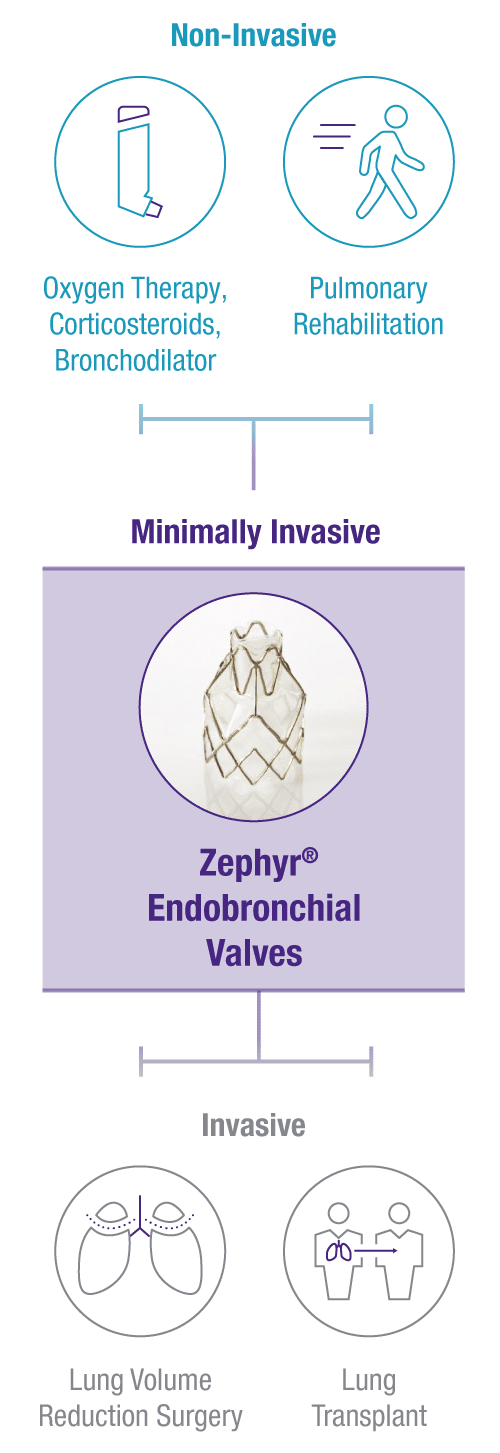Chronic obstructive pulmonary disease (COPD) is a progressive inflammatory disease that affects the lungs and cannot be cured.
Emphysema is one type of COPD in which air becomes trapped in the lungs, causing them to take up more space in your chest cavity and put pressure on your diaphragm. Because the lungs are hyperinflated, it’s harder to exhale. With damaged lungs, your ability to exchange oxygen for carbon dioxide is hindered, causing the almost constant shortness of breath.2,3 Smoking, breathing in polluted air, and genetics are all factors that can cause or contribute to COPD. Preventative measures include:
- Quitting smoking
- Changing the air filters in your home
- Exercising often
- Maintaining a healthy diet
COPD is debilitating and can be expensive to treat, so preventative measures are helpful to follow.3 If prevention is not possible, there are several treatment options for patients with COPD or severe emphysema, including the Zephyr® Endobronchial Valve System.
Defining Quality of Life
Quality of life refers to the degree to which an individual is healthy, comfortable, and able to enjoy life.
When someone is suffering from COPD, their quality of life worsens as symptoms worsen. As the disease progresses, patients lose the ability to breathe without the help of medication, inhalers, or oxygen.
Symptoms of COPD2
- Difficulty breathing
- Coughing
- Wheezing
- Fatigue
- Mucus production
- Exacerbation episodes
An exacerbation episode is when a patient’s normal symptoms become much more severe for at least 24 hours.
Treatments to improve quality of life

Patients with emphysema are typically treated by pulmonologists ― physicians who specialize in lung diseases. Standard treatment for emphysema patients can include:
- Medications typically delivered through inhalers and relaxes the muscles around your airways1
- Inhaled steroids: drugs that reduce airway inflammation and help prevent exacerbations (episodes of worsening symptoms)1
- Oxygen therapy: supplemental oxygen requiring the use of a nasal cannula, tubing, and oxygen tank3
- Zephyr Endobronchial Valve Treatment: a nonsurgical, minimally invasive, and completely reversible treatment in which small valves are placed in a patient’s airways. These valves allow air out, but not into, the damaged lobes of the lungs to reduce hyperinflation. The procedure provides more space for the healthier lobes of the lungs to function better.4
- Lung volume reduction surgery: a surgery in which the surgeon removes small pieces of damaged lung tissue from the lungs. This creates extra space in the chest cavity, so the healthier lung tissue can expand. It allows the patient to breathe more easily.1
- Lung transplant: another surgery in which a patient receives a new, healthy lung. Any patient who receives a transplant will always take immune-suppressing medications to prevent organ rejection. Only patients who meet certain criteria are considered for transplant.1
For more information
For more information about whether Zephyr is right for you or to learn more, visit our Zephyr Valve Treatment page.
References:
- Mayo Clinic Staff. “COPD – Diagnosis & Treatment.” Mayo Clinic, Mayo Foundation for Medical Education and Research, 15 Apr. 2020, https://www.mayoclinic.org/diseases-conditions/copd/diagnosis-treatment/drc-20353685.
- Mayo Clinic Staff. “COPD – Symptoms & Causes.” Mayo Clinic, Mayo Foundation for Medical Education and Research, 15 Apr. 2020, https://www.mayoclinic.org/diseases-conditions/copd/symptoms-causes/syc-20353679.
- Pietrangelo, Ann. “Everything You Need to Know About Chronic Obstructive Pulmonary Disease (COPD).” Healthline, Healthline Media, 22 Jan. 2021, healthline.com/health/copd#living.
- “Zephyr Endobronchial Valve Treatment.” Zephyr Endobronchial Valve Treatment | Columbus Regional Health, https://www.crh.org/service-centers/lung-institute/zephyr-endobronchial-valve-treatment.
US-EN-1177-v2







 If you do not see an email from “Val at Zephyr Valve” in your inbox within 15 minutes of signing up, go to your “Spam” folder within Gmail. (You may have to click "More" to see the Spam folder.) Select the email from "Val at Zephyr Valve."
There will be a gray box at the top that says “Why is this message in spam?” Click the “Report Not Spam” button. This will move the email to your inbox.
If you do not see an email from “Val at Zephyr Valve” in your inbox within 15 minutes of signing up, go to your “Spam” folder within Gmail. (You may have to click "More" to see the Spam folder.) Select the email from "Val at Zephyr Valve."
There will be a gray box at the top that says “Why is this message in spam?” Click the “Report Not Spam” button. This will move the email to your inbox. Go back to your inbox and open the email. Click on the icon next to “Val at Zephyr Valve”, you’ll see a person icon with a “+”. Click that, and you can add Val to your Contacts list. If you don’t receive a second email from us in a few days, please check your Spam folder again.
Go back to your inbox and open the email. Click on the icon next to “Val at Zephyr Valve”, you’ll see a person icon with a “+”. Click that, and you can add Val to your Contacts list. If you don’t receive a second email from us in a few days, please check your Spam folder again.
